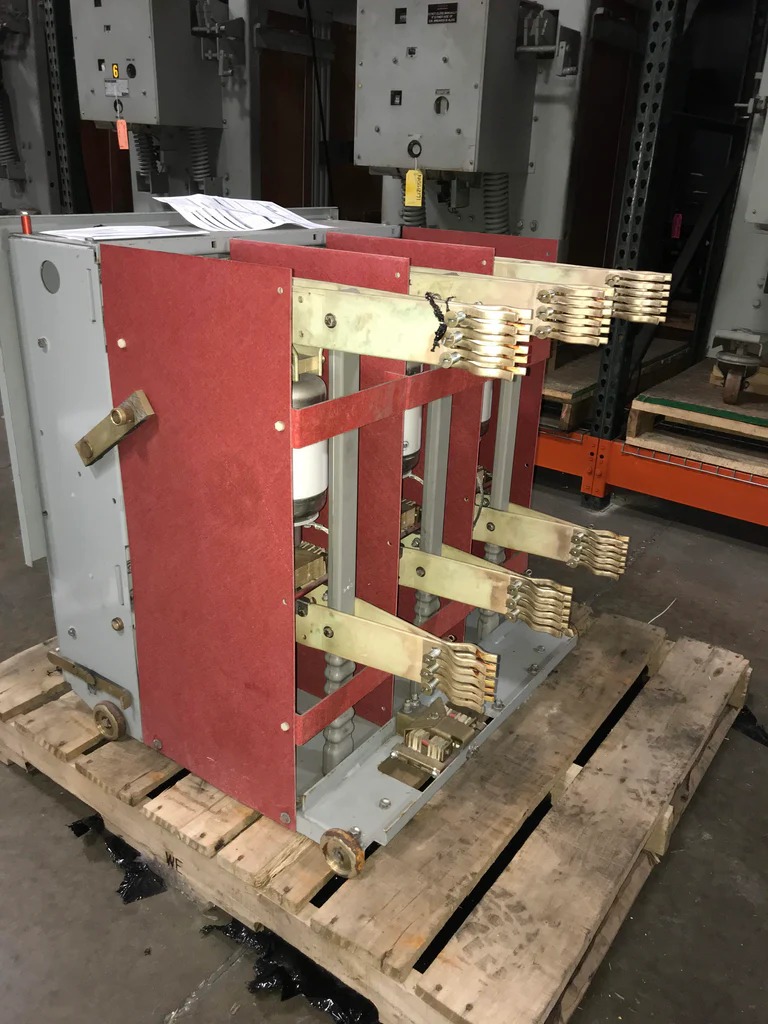Introduction to Vacuum Circuit Breaker
A vacuum circuit breaker is one of the most essential components in modern electrical power systems. It plays a critical role in protecting electrical circuits from faults and overloads. At Aierway, we understand the importance of ensuring safety, reliability, and efficiency in power systems, and that’s why understanding the Vacuum circuit breaker specifications is crucial for every engineer, technician, and industrial operator.
What Is a Vacuum Circuit Breaker
A vacuum circuit breaker is a type of circuit breaker where the arc quenching takes place in a vacuum environment. It is primarily used for medium voltage applications ranging from 1 kV to 36 kV. When the contacts of the vacuum circuit breaker separate, the current is interrupted within the vacuum chamber, preventing the flow of electricity and ensuring system safety.
Importance of Vacuum Circuit Breaker in Power Systems
The vacuum circuit breaker has gained immense popularity due to its superior performance, minimal maintenance, and long operational life. Unlike traditional air or oil circuit breakers, the vacuum circuit breaker does not involve any gas or oil medium for arc extinction, making it environmentally friendly and highly reliable. It is widely used in industrial plants, substations, and commercial power distribution networks.
Key Specifications of Vacuum Circuit Breaker
When choosing a vacuum circuit breaker, it is essential to understand the key specifications that define its performance and application suitability.
Rated Voltage
The rated voltage of a vacuum circuit breaker refers to the maximum system voltage it can safely handle. This specification ensures that the breaker can operate effectively within the electrical network without failure.
Rated Current
The rated current defines the continuous current that the vacuum circuit breaker can carry under normal operating conditions. It ensures the system’s smooth functioning without overheating or damage.
Short Circuit Breaking Capacity
This is one of the most critical specifications of a vacuum circuit breaker. It indicates the maximum fault current the breaker can interrupt without sustaining damage. A higher breaking capacity means better protection and reliability.
Rated Frequency
Most vacuum circuit breaker designs operate at standard frequencies of 50 Hz or 60 Hz, depending on the regional power grid standards. Selecting the correct frequency ensures optimal performance and compatibility with the system.
Operating Mechanism
The operating mechanism of a vacuum circuit breaker determines how the breaker opens and closes its contacts. Common mechanisms include spring-operated, magnetic actuator, and motor-operated systems. Each mechanism affects the breaker’s speed, precision, and reliability.
Construction of Vacuum Circuit Breaker
A vacuum circuit breaker consists of several essential components such as the vacuum interrupter, operating mechanism, arc shield, and contact assembly.
Vacuum Interrupter
The vacuum interrupter is the heart of the vacuum circuit breaker. It is a sealed chamber that contains fixed and moving contacts. When these contacts separate, an arc forms, but it is quickly extinguished due to the absence of air or gas, ensuring a clean interruption.
Contacts
Contacts in a vacuum circuit breaker are made from special alloys that can withstand high temperatures and electrical stress. Their design minimizes wear and prolongs the breaker’s service life.
Arc Shield
The arc shield prevents the metal vapors generated during arc formation from condensing on the inner surface of the vacuum interrupter, maintaining its insulation strength.
Working Principle of Vacuum Circuit Breaker
The vacuum circuit breaker operates on a simple yet effective principle. When a fault occurs in the electrical circuit, the breaker’s contacts separate rapidly. The resulting arc is quickly extinguished in the vacuum since there are no ionized particles to sustain it. This makes the vacuum circuit breaker highly efficient in breaking current flow and protecting the system.
Advantages of Using Vacuum Circuit Breaker
The vacuum circuit breaker offers several advantages over traditional circuit breakers.
- High reliability – It provides consistent performance even under demanding conditions.
- Low maintenance – The sealed vacuum interrupter requires minimal servicing.
- Long lifespan – The contacts suffer less erosion, extending operational life.
- Compact design – A vacuum circuit breaker is smaller and lighter than oil or air circuit breakers.
- Eco-friendly – It eliminates the need for insulating gases, reducing environmental impact.
Applications of Vacuum Circuit Breaker
The vacuum circuit breaker is used in various sectors, including industrial manufacturing, utilities, mining, transportation, and commercial buildings. It is ideal for medium-voltage switchgear, motor control centers, and substation protection. At Aierway, we provide detailed technical guidance for selecting the right vacuum circuit breaker to suit your application.
Maintenance of Vacuum Circuit Breaker
Although the vacuum circuit breaker is known for its low maintenance, periodic inspection is still necessary. Operators should check the insulation resistance, contact wear, and mechanical operation periodically to ensure maximum safety and performance.
Selection Guide for Vacuum Circuit Breaker
When selecting a vacuum circuit breaker, several factors must be considered:
- Rated voltage and current
- Breaking and making capacity
- Frequency and duty cycle
- Environmental and installation conditions
Choosing the right vacuum circuit breaker guarantees efficient protection, minimizes downtime, and enhances the safety of your electrical network.
Future of Vacuum Circuit Breaker Technology
With rapid advancements in electrical engineering, the vacuum circuit breaker continues to evolve. Future designs are expected to feature smart monitoring, remote operation, and AI-based fault diagnostics. Aierway stays at the forefront of these innovations, ensuring our customers receive the most advanced and reliable solutions in the industry.
Conclusion
Understanding vacuum circuit breaker specifications is essential for ensuring electrical safety, reliability, and performance. From its working principle to its construction and key parameters, every aspect influences the breaker’s efficiency. At Aierway, we emphasize the importance of selecting high-quality vacuum circuit breakers that meet global standards. By investing in the right technology, industries can ensure long-term safety, sustainability, and operational excellence.











Leave a Reply